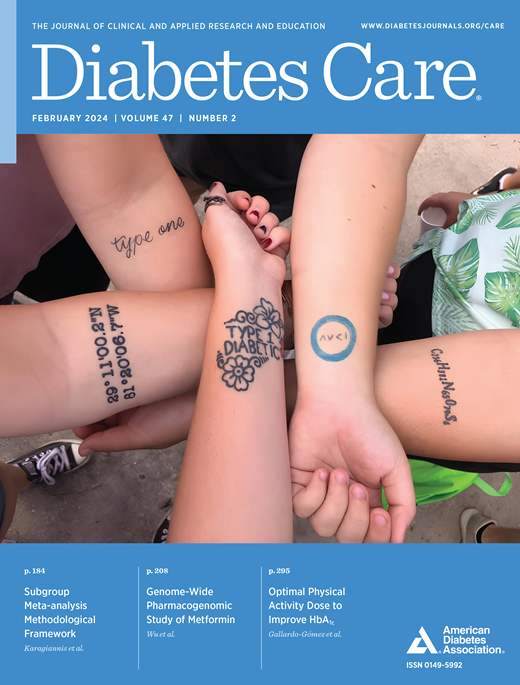基础胰岛素在推进 2 型糖尿病患者治疗中的现代作用
IF 16.6
1区 医学
Q1 ENDOCRINOLOGY & METABOLISM
引用次数: 0
摘要
胰岛素缺乏常因胰岛素抵抗而加重,可导致2型糖尿病(T2DM)。随着胰高血糖素样肽1受体激动剂和钠-葡萄糖共转运蛋白2抑制剂的可用性,在生活方式改变加上口服药物不足后,基础胰岛素(BI)治疗不再是一线选择。与BI相比,较新的药物需要少量的滴定,以葡萄糖依赖的方式降低高血糖,并减轻体重。重要的是,新药物可以在短期内减少心肾事件。尽管如此,胰岛素治疗在控制高血糖和长期预防血管并发症方面仍然发挥着关键作用。在许多情况下使用它是必要的,包括代谢紧急情况、新发糖尿病、潜伏性自身免疫性糖尿病(LADA)、妊娠,以及由于合并症而不需要其他药物时。在其他治疗经常失败和/或不耐受的情况下,需要BI来保持HbA1c达到目标。鉴于其不同但互补的作用机制,将BI与新药物联合使用有几个优点,主要是每种药物的剂量较低,在减少副作用的同时提高了依从性和结果。采用精准医学的原则,单药或联合用药的多种选择更能满足异质性T2DM人群临床表型的多样性。本文章由计算机程序翻译,如有差异,请以英文原文为准。
The Modern Role of Basal Insulin in Advancing Therapy in People With Type 2 Diabetes
Insulin deficiency, often aggravated by insulin resistance, results in type 2 diabetes mellitus (T2DM). With the availability of glucagon-like peptide 1 receptor agonists and sodium–glucose cotransporter 2 inhibitors, basal insulin (BI) therapy is no longer the first-line option after lifestyle modification plus oral agents is insufficient. In contrast to BI, the newer medications require minor titration, lower hyperglycemia in a glucose-dependent manner, and reduce body weight. Importantly, the newer agents reduce cardiorenal events in the short term. Nonetheless, insulin therapy continues to play a key role in control of hyperglycemia and therefore long-term prevention of vascular complications. Its use is essential in many circumstances, including metabolic emergencies, new diabetes onset, latent autoimmune diabetes (LADA), pregnancy, and when other agents are less desirable due to comorbidities. BI is needed in the frequent condition of failure of other therapies to keep HbA1c to target and/or intolerance of them. There are several advantages to the combination of BI with the newer medications given their different but complementary mechanisms of action, primarily, the lower dose of each, improving adherence and outcomes while decreasing the side effects. Multiple choices for single or combination use can better meet the variety of clinical phenotypes in the heterogeneous T2DM population, using the tenets of precision medicine.
求助全文
通过发布文献求助,成功后即可免费获取论文全文。
去求助
来源期刊

Diabetes Care
医学-内分泌学与代谢
CiteScore
27.80
自引率
4.90%
发文量
449
审稿时长
1 months
期刊介绍:
The journal's overarching mission can be captured by the simple word "Care," reflecting its commitment to enhancing patient well-being. Diabetes Care aims to support better patient care by addressing the comprehensive needs of healthcare professionals dedicated to managing diabetes.
Diabetes Care serves as a valuable resource for healthcare practitioners, aiming to advance knowledge, foster research, and improve diabetes management. The journal publishes original research across various categories, including Clinical Care, Education, Nutrition, Psychosocial Research, Epidemiology, Health Services Research, Emerging Treatments and Technologies, Pathophysiology, Complications, and Cardiovascular and Metabolic Risk. Additionally, Diabetes Care features ADA statements, consensus reports, review articles, letters to the editor, and health/medical news, appealing to a diverse audience of physicians, researchers, psychologists, educators, and other healthcare professionals.
 求助内容:
求助内容: 应助结果提醒方式:
应助结果提醒方式:


